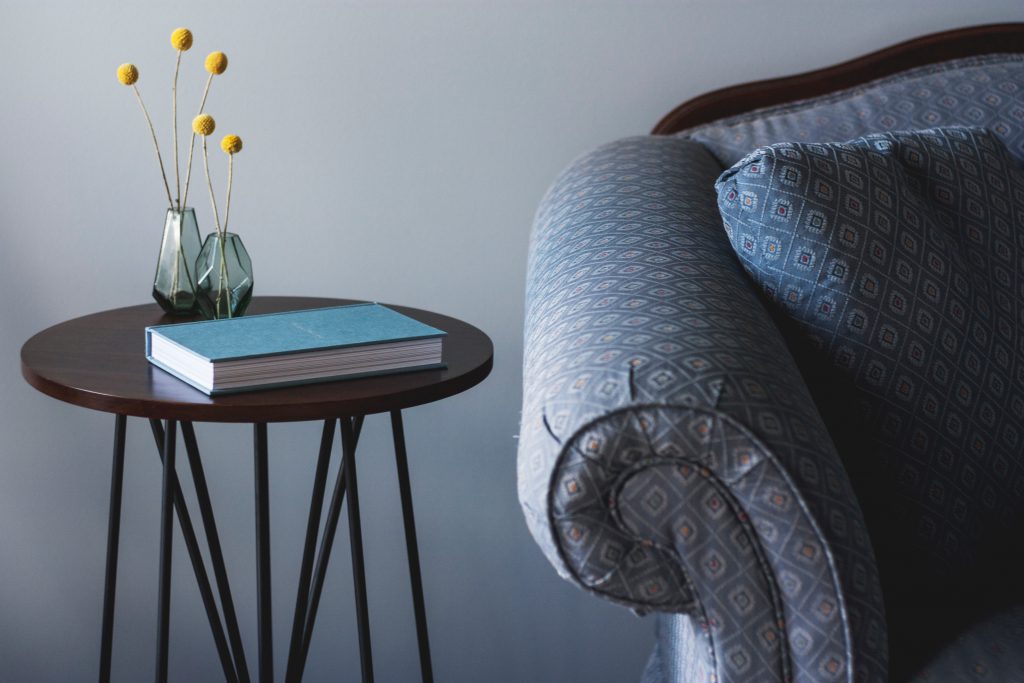What makes one person cling to material things, while another is content with the memories of a life well-lived? A tale of one woman who couldn’t let go, and one who moved on with grace.
Once I worked with two clients who, on par, were as alike as could be. I’ll call them Jane and Mary. They were both women of a certain age who lived similar lifestyles. Fond of entertaining over the years, they both possessed enormous volumes of china, crystal, and silver. They lived in large, elegant homes filled with beautiful furnishings.
But life brings changes, and both of my clients found themselves in a position where they needed to scale down. They each planned to move into two-bedroom apartments.
Jane could not bear to part with anything. After selecting the items she needed for her new apartment, she insisted that her remaining possessions be put into a storage facility. The amount of stuff that wound up in storage far exceeded what she kept out for practical usage—by three times the volume!
And there it will sit, costing Jane money every month, until the day she finally realizes that she will never need it and will never use it ever again. If this realization never strikes, it is Jane’s children who will eventually have to deal with it. And they probably won’t even open up the boxes before they toss them. (Sorry if I made you wince, but it’s true.) Sadder still is that some of the stored items have value, especially all the sterling silver items.
I know from experience how this story pans out. I have a cautionary tale of another client who, due to reduced circumstances, needed to sell her large home. It sold, but she refused to move. Eventually, a moving company was brought in to transfer everything into a massive storage facility. For several years, my client spent $4,000 a month for the privilege of storing the effects of her former opulent lifestyle. Eventually, I was hired to empty (sell/donate/trash) the storage facility. The movers had packed everything, including ashtrays with butts and ashes—out they went, along with seven full truckloads of garbage.
Fortunately, I was able to monetize some of her possessions, which brought in approximately $130K. Items had become tired and dated, and had lost value while in storage. Coupled with the extraordinary amount that she had spent over the years, this meant that my client barely broke even.
It was wasteful. Why then, did she do it? Why did Jane follow this same path, despite my advice? So often, people think memories are something they can possess, that they can hold in their hands. They think their belongings are somehow imbued with those memories, as if china plates and wooden chairs were more than just simple objects. (Children may engage in magical thinking—teddy bears and dolls are thought of as “real”—but adults certainly aren’t immune to it either.)
I hate to break it to you, but they really are just things. Beautiful things in many circumstances, but things all the same. Storing things is different than cherishing memories.
To be clear, there are certain circumstances in which investing in a storage facility makes perfect sense. For example, if you’re renovating your home, you might need to relocate your furnishings temporarily. If you are a fine art collector, you’d want to keep your assets in a specialized, temperature-controlled facility. If your company is relocating you overseas for a year, but you know you’ll be back, storage is a good choice.
Most of the time, however, it’s not.
Let’s go back to Mary, the other client I cited at the beginning of this story. Mary took a different approach when she realized she wanted to move. She kept exactly what she needed for a two-bedroom apartment. She didn’t want voluminous amounts of furniture or cluttered rooms. Mary retained two sets of beautiful china and service for 12 in sterling silver, so that she can still entertain (albeit on a smaller scale) with elegance and grace. Her children asked for some things and Mary liquidated the rest.
Why is Mary so willing to let her things go? “I have used them and enjoyed them,” she says, “and now I have my memories to enjoy.”
Mary’s stance of contentment and the ease with which she unburdened herself is a place we should all strive to reach. It’s a positive way of being sentimental. If we can find a way to be content with our memories and with a life well-lived, we will realize that we don’t need to cling to things we no longer need.
What’s your stance on storage? I welcome your thoughts and questions—please share them in the “Comments” section below.
Going forward, I’ll be addressing a number of other topics, guided by your input. For example: What would you want your parents to tell you if you have to take care of them or their estate? What would you want to access easily? What don’t you know that you think you should know?
Need help and advice?
Just give me a call!
Best wishes,
Sharon
646-784-3073
www.360demenager.com
Tip of the Month
P.S. A client recently wrote to me about her organizational strategy. She writes: “To avoid putting our adult children under any duress, we’ve updated our wills and purchased cemetery plots. I created a binder which I keep in a safe place at home. It contains our healthcare proxies, copies of the wills, durable POA, location of our plots, and our safe deposit box location with a list of all documents and valuables in it. If I have to take something out that needs to be returned, I highlight the item on my computer.”
This is a fabulous approach, to which I would add one of several key tips—don’t forget to provide the password to your computer, so that it can be accessed as needed in your absence!
Subscribe to My Newsletter:



Recent Comments